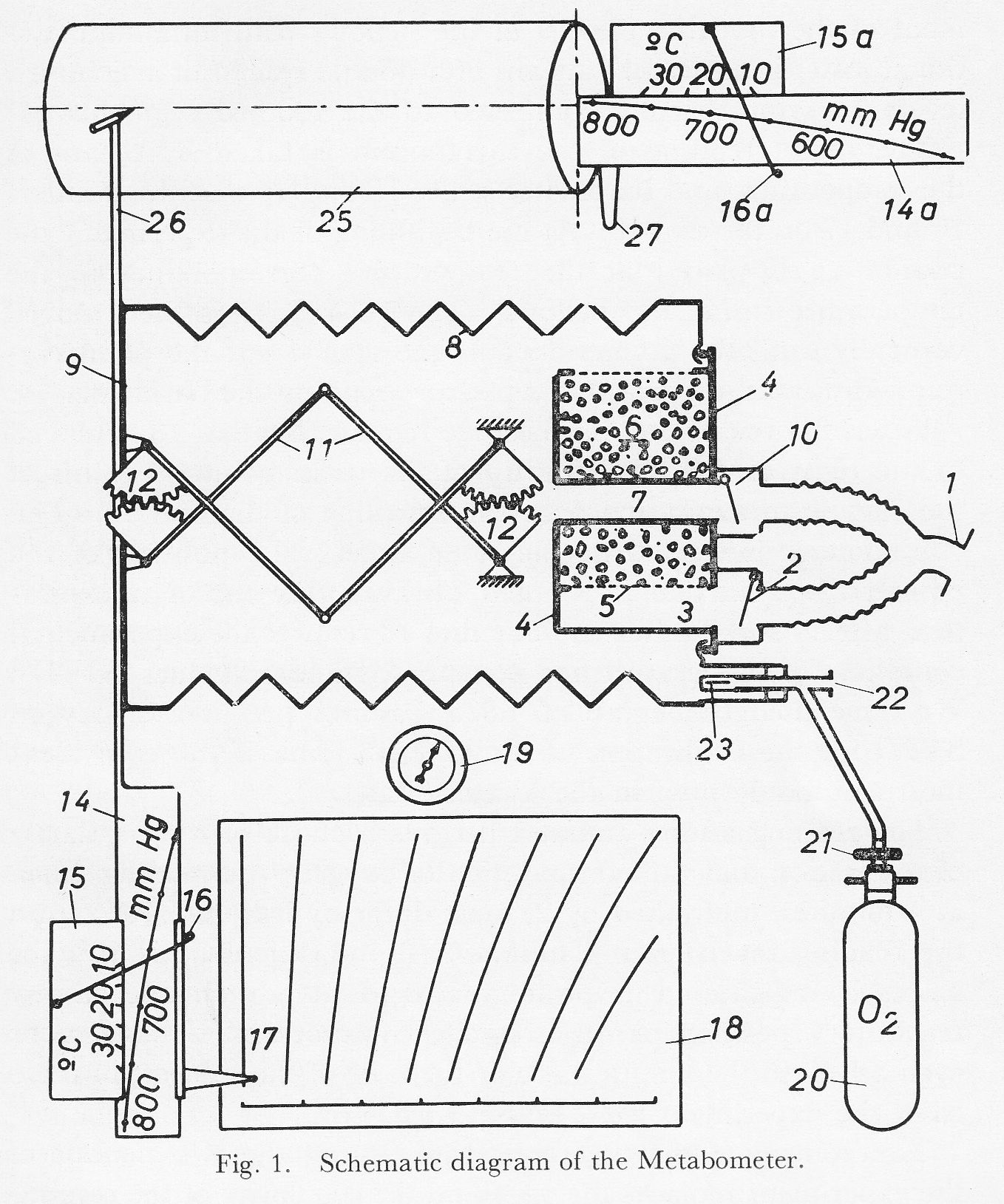From “New methods of studying gaseous exchange and pulmonary function” by Alfred Fleisch, published by Charles C. Thomas, 1960, page 5.
“Fig. 1 gives a schematic representation of the instrument. From the mouth piece 1 the expired air is directed through the corrugated tube into the lower part 3 of the soda lime container 4 through the valve 2. This air then passes through the stainless steel lattice 5 and the soda lime 6 and reached the bellows 8, thus displacing the movable plate 9 towards the left. At inspiration the air leaves through the central tube 7 and the valve 10, and returns to the mouth piece 1. The rectilinear and parallel movement of the movable plate 9 of the bellows with minimum frictional losses is assured by means of a double system of articulated levers 11 symmetrically connected to the toothed segments 12.
“The direct reading of the metabolism is taken by means of the temperature and barometer scales 15 and 14 and the pointers 16 and 17 on the dial 18. At the beginning of the experiment the pointer 16 is placed at the temperature corresponding to the temperature inside the bellows. The vernier 15 is then moved vertically until the pointer 16 cuts the scale 14 at the point corresponding to the atmospheric pressure read on the barometer 19.
“When the respiration has become regular, the dial 18 is moved to the right or left until the tip of the main pointer 17 falls at the end of an exhalation onto the zero line of dial 18. The chronometer is started at the same time. The position of the pointer 17 on the dial 18 is noted, always at the end of an expiration, after 4 and 8 minutes. The dial 18 reduced the experimental conditions of temperature and pressure to standard values (STPD). We have used the figure of 4.825 calories per liter of oxygen STPD for the calibration of the dial 18. This is equivalent most commonly used in the United States.
“The reading after 4 minutes permits a check of the regularity of respiration and the consumption of oxygen; the reading taken at 4 minutes multiplied by 2, must differ by less than 10% from the reading taken after 8 minutes. If the difference is 10% or more, it indicates a respiratory irregularity, a change in the respiratory position or an irregular consumption of oxygen, or even a leak in the mouth piece or the nose of the subject; in these cases the experiment must be repeated.”
